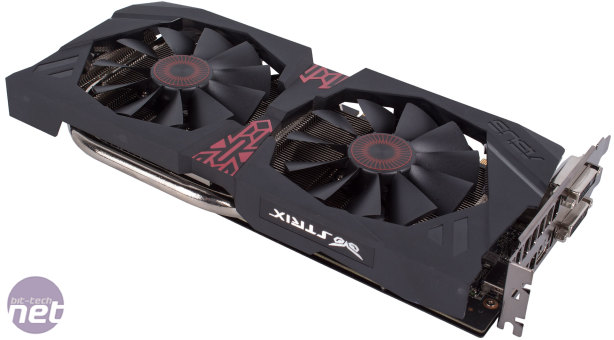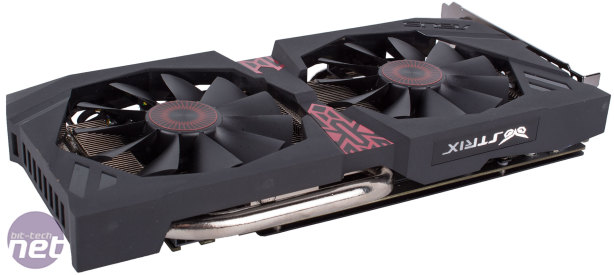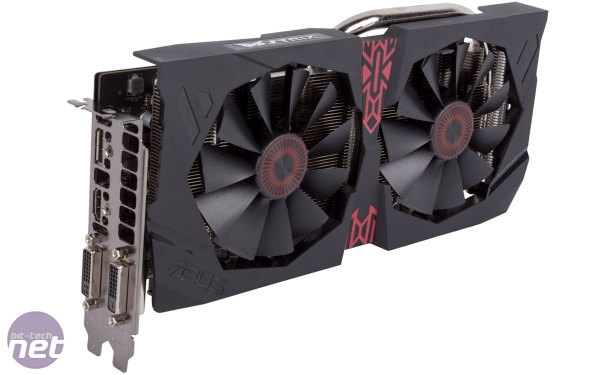Performance Analysis
The R9 380X is not designed to be a 4K-capable card, and that shows in the benchmarks. That said, it does scrape by with a minimum of 27fps in Alien: Isolation with all settings at maximum, so it shouldn't have any trouble running certain less demanding titles (e.g. MOBAs) at 4K, either on an actual 4K panel or a 1080p one through Virtual Super Resolution.That leaves the discussion focussed on 1080p and 1440p. Going by average frame rates (excluding Middle Earth, for now), the moderately overclocked R9 380X Strix is 8 percent faster than a heavily overclocked GTX 960 at 1080p, and this lead increases to 14 percent at 1440p, presumably down in part to the larger frame buffer and high memory bandwidth. It's also 10 percent ahead of the R9 380 at both resolutions (again, excluding Middle Earth). On the other side, the GTX 970 is still well ahead, leading the R9 380X Strix OC by over 30 percent at 1080p and just under 30 percent at 1440p.
The Middle Earth results show a clear difference between 2GB and 4GB cards, hence why we excluded them just now. The Ultra textures in this game are very demanding, and this is the sort of game that makes a strong argument for opting for at least 4GB if you want to play with maximum settings. That said, in most games the GPU will still be the limit before the frame buffer.
Looking at minimum frame rates, the R9 380X Strix OC achieves more than 40fps in all games at 1080p, and clears 60fps in two of the six games too – it's clearly a capable card at this resolution.
As for 1440p, the resolution AMD says the card targets, it's a pretty solid showing. Other than a disappointing 27fps minimum in Battlfield 4, it otherwise crosses the important 30fps barrier in all games. Admittedly, it only just manages this in Crysis 3, The Witcher 3 and Middle Earth, but equally none of games truly cripple it. You will need to make detail sacrifices to get truly smooth 1440p gameplay, however, which does somewhat call into question the card's longevity for playing at this resolution.
Power consumption isn't terrible, as it's actually less than the R9 380 we have on test, demonstrating some truth to Asus's claims about improved efficiency. However, it's also still higher than the GTX 970, which as we've seen is significantly faster. The thermals on this card are fine though; the delta T of 49°C is perfectly healthy and as with most Strix cards this one is extremely quiet under load, with no audible power noise either.
Our 15 percent core and 14 percent memory overclocks resulted in a performance boost of between 11 and 12 percent at 1440p. This is of course a welcome boost but it doesn't change the card's rankings – it still doesn't come very close to the GTX 970 or R9 390 in performance. At these settings, peak power consumption for our system was riding close to 400W but the card was still very quiet and not too hot.
Conclusion
The R9 380X is certainly capable of playing modern titles at 1440p with high or very high settings, and it's really the only sub-£200 card that that can be said for. Starting at £185, it's almost 25 percent more expensive than basic R9 380 and GTX 960 cards, but that refers to 2GB SKUs. Looking at 4GB ones, it's closer to a 10 percent difference in price, which is much more in line with the performance delta between the respective GPUs.Ultimately, it depends how much value you place on having a 4GB frame buffer. For 1080p gamers, there are arguments for and against it depending on the sort of games you play and how frequently you upgrade. The R9 380X is very comfortable at this resolution, but the GTX 960 2GB and R9 380 2GB offer most of its performance and are better value, although their lifespan for playing the latest games at high settings is questionable. For 1440p, you'll definitely want 4GB, and the R9 380X is a good value offering for this resolution. That said, for 25-30 percent more cash you could get a GTX 970, arguably the best card on the market and one that will give you just as sizeable a return when it comes to performance. Its extra grunt will definitely come in handy in the future although to what degree remains to be seen, as even 4GB (or more accurately, 3.5GB + 0.5GB) could start to be squeezed at this resolution. We've seen some outstanding cards in the sub-£200 price bracket in recent years, and while we wouldn't quite describe the R9 380X as that, it does offer decent enough bang for buck to be worth a recommendation if that's your budget.
The Asus card we were furnished with has also impressed us at every turn. It's a little large, but it does feature semi-passive fans and it is very quiet as well. While it's impossible to say without mass testing, the premium components and digital voltage control do appear to offer good potential for overclocking. As such, provided it does stick to the sub-£200 MSRP, we're happy to recommend it too. If it rises above it, however, the argument of just stepping up to a GTX 970 would be even stronger.

-
Performance31 / 40
-
Features26 / 30
-
Value26 / 30


MSI MPG Velox 100R Chassis Review
October 14 2021 | 15:04












Want to comment? Please log in.